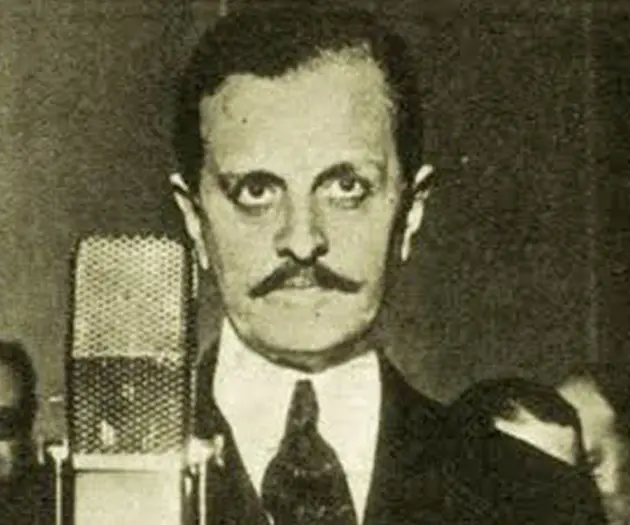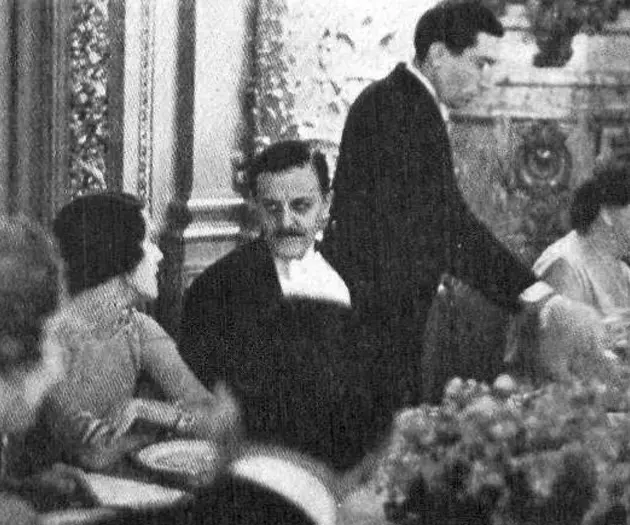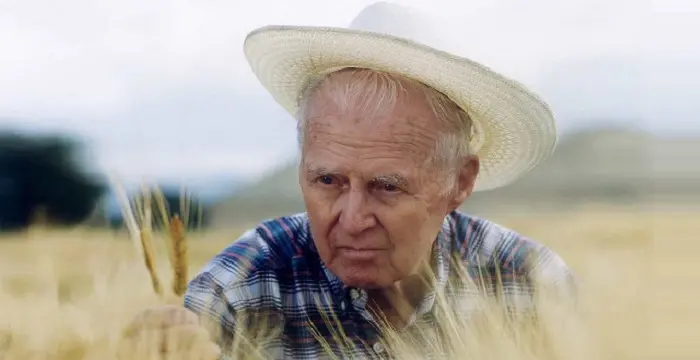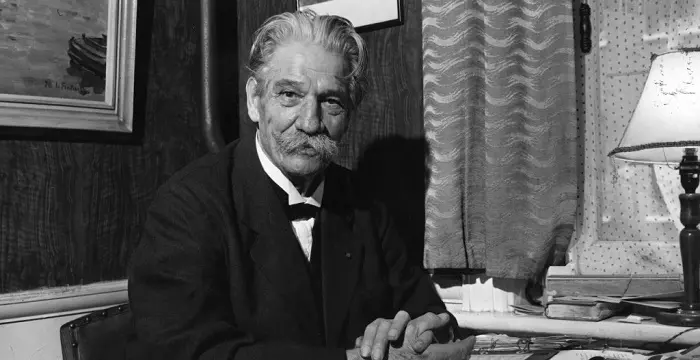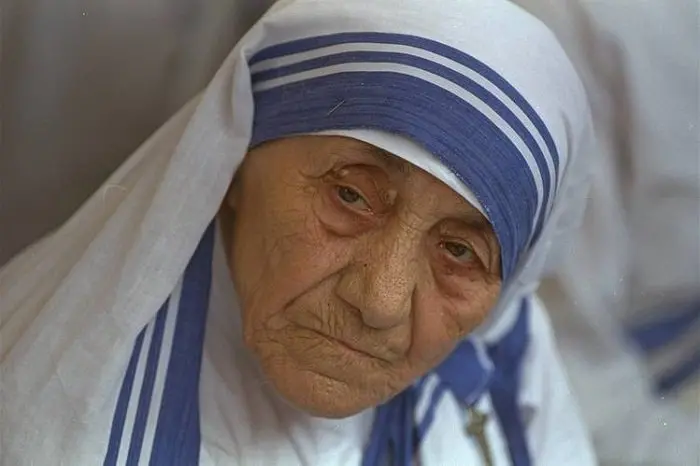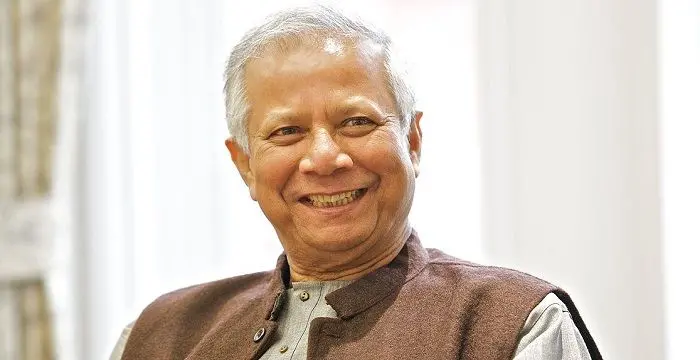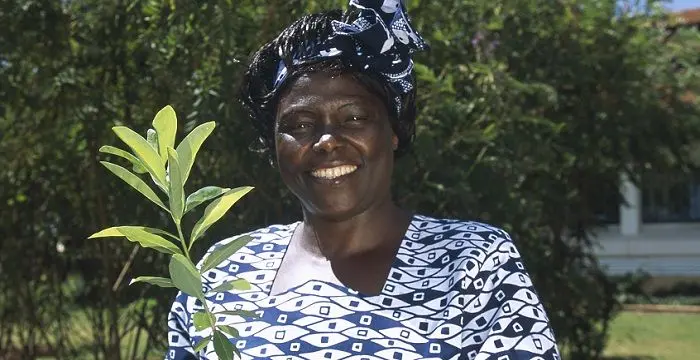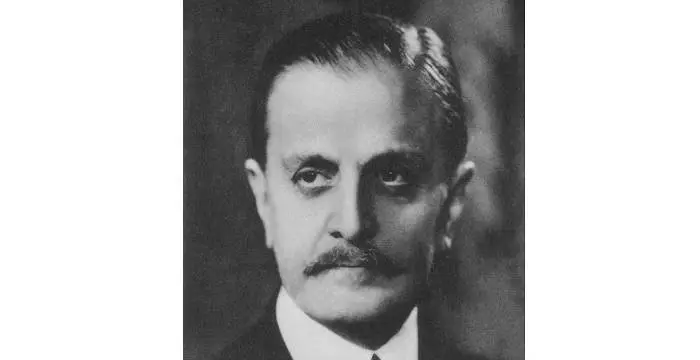
Carlos Saavedra Lamas - First Latin American Nobel Peace Prize Recipient, Birthday and Life
Carlos Saavedra Lamas's Personal Details
Carlos Saavedra Lamas was an Argentine politician, diplomat, labour rights legislator, international law expert and the first Latin American Nobel Peace Prize recipient
| Information | Detail |
|---|---|
| Birthday | November 1, 1878 |
| Died on | May 5, 1959 |
| Nationality | Argentinian |
| Famous | Nobel Peace Prize, Intellectuals & Academics, Leaders, Diplomats, First Latin American Nobel Peace Prize Recipient |
| Universities |
|
| Birth Place | Buenos Aires, Argentina |
| Gender | Male |
| Sun Sign | Scorpio |
| Born in | Buenos Aires, Argentina |
| Famous as | First Latin American Nobel Peace Prize Recipient |
| Died at Age | 80 |
Carlos Saavedra Lamas's photo
Who is Carlos Saavedra Lamas?
Carlos Saavedra Lamas was an Argentine politician, diplomat, labour rights legislator, international law expert and the first Latin American Nobel Peace Prize recipient. He went on to become one of the most influential men in modern Argentine history. Lamas belonged to an aristocratic family of Argentine patriots and excelled at school before studying law at the University of Buenos Aires and then started off as a professor at the University of La Plata. Lamas was not only a legal eagle but also someone who was seriously involved in reforming the condition of workers in his own country and was active in bringing about legislation in relation to labour laws in the country. He was also a supporter of the International Labour Organisation and also served as its president at one point. Lamas had also served as the foreign minister of Argentina in the 1930s and during that time he really showed is skills as an international law expert and a diplomat. During his time as foreign minister he helped in bringing to an end a damaging war among two South American countries and it is one of the reasons why he is regarded as one of the most influential diplomats of his generation.
// Famous Intellectuals & Academics
Bertil Gotthard Ohlin
Bertil Gotthard Ohlin was a famous Swedish economist. This biography profiles his childhood, family life & achievements.
Emily Greene Balch
Emily Greene Balch was an American economist, sociologist and pacifist who won the 1946 Nobel Peace Prize. This biography of Emily Greene Balch provides detailed information about her childhood, life, achievements, works & timeline.
Martin Buber
One of the greatest philosophers to have ever walked on earth, Martin Buber contributions to philosophy is a long-standing one. Explore all about his profile, childhood, life and timeline here.
Childhood & Early Life
Carlos Saavedra Lamas was born on 1 November, 1878 in the city of Buenos Aires, Argentina. Although it is known that he was born in the family of an Argentine patriot; there is no record on the identity of his parents. According to some accounts, the family was an aristocratic one.
Carlos Saavedra Lamas was an exceptional student who excelled in all subjects in school and was recognised was one of the most gifted students at Lacordaire College. Subsequently, Lamas studied law at the University of Buenos Aires and in 1903 awarded the doctor of law.
After graduating from University, he went off to Paris for further education but the name of the institutions he attended is unknown. He returned to Argentina after that and was appointed as a professor at University of La Plata.
Career
Carlos Saavedra Lamas taught law and history of the constitution at the University of La Plata and continued at the university for 4 decades. In 1906, he commenced his public career when he became the Director of Public Credit and a year later he was made the secretary general of the Buenos Aires municipality.
He became a member of the Argentine parliament for the first time in 1908 and other than working on legislation for things like sugar production, colonisation and coastal water rights he was also involved in the country’s foreign policy. He was instrumental in reviving Argentina’s arbitration treaty with Italy. Seven years later, he was made the Minister of Justice and Education.
Carlos Saavedra Lamas was one of the leading legal experts in the field of labour laws and he wrote plenty of treatises on the subject. He was instrumental in drafting legislation in relation to labour in his country and in 1919 supported the establishment of the International Labour Organisation. He was leader of the Argentine chapter of the organisation and also wrote the treatises titled ‘Centre of Social and Labour Legislation’ and ‘National Code of Labour Law’.
In 1932, General Agustin P. Justo became the president of Argentina and in the same year Carlos Saavedra Lamas was appointed as the foreign minister of the country. During his six year stint as foreign minister; he played an important role in bringing an end to the Chaco War between Bolivia and Paraguay and also established the Treaty of Non-aggression and Conciliation between South American nations. Two years prior to the end of his tenure, he was made the president of Assembly of the League of Nations.
In 1938, he went back to the world of academics after his stint of foreign minister came to an end. He immediately started off as a professor of political economy and law at the University of Buenos Aires and three years later he went on to become the president of the university.
Major Works
Lamas was without doubt one of the most influential men in Argentina and South America for his role in international diplomacy and in framing labour legislations in the country. However, the most important work of his career was to bring the Chaco War between Paraguay and Bolivia to a peaceful conclusion.
Awards & Achievements
Carlos Saavedra Lamas was awarded the Nobel Peace Prize in 1936 for helping end the Chaco War.
He was also awarded the Grand Cross of the Legion of Honour of France and the corresponding awards from 10 different countries.
Personal Life & Legacy
Carlos Saavedra Lamas got married to the daughter of one of Argentina’s presidents - Roque Saenz Pena but there is no record of the name of his wife. There is no record of any children either.
Lamas died on 5 May, 1959 in Buenos Aires due to brain haemorrhage at the age of 80.
// Famous Leaders
Edi Rama
Edi Rama is the current Prime Minister of Albania. Check out this biography to know about his childhood, life, achievements, works & timeline.
Tecumseh
Tecumseh was a Native American leader of the Shawnee clan. This biography profiles his childhood, life and timeline.
Khalifa bin Zayed Al Nahyan
Sheikh Khalifa bin Zayed Al Nahyan is the current President of the United Arab Emirates (UAE). Check out this biography to know about his birthday, childhood, family life, achievements and fun facts about him.
Carlos Saavedra Lamas biography timelines
- // 1st Nov 1878Carlos Saavedra Lamas was born on 1 November, 1878 in the city of Buenos Aires, Argentina. Although it is known that he was born in the family of an Argentine patriot; there is no record on the identity of his parents. According to some accounts, the family was an aristocratic one.
- // 1903Carlos Saavedra Lamas was an exceptional student who excelled in all subjects in school and was recognised was one of the most gifted students at Lacordaire College. Subsequently, Lamas studied law at the University of Buenos Aires and in 1903 awarded the doctor of law.
- // 1906Carlos Saavedra Lamas taught law and history of the constitution at the University of La Plata and continued at the university for 4 decades. In 1906, he commenced his public career when he became the Director of Public Credit and a year later he was made the secretary general of the Buenos Aires municipality.
- // 1908He became a member of the Argentine parliament for the first time in 1908 and other than working on legislation for things like sugar production, colonisation and coastal water rights he was also involved in the country’s foreign policy. He was instrumental in reviving Argentina’s arbitration treaty with Italy. Seven years later, he was made the Minister of Justice and Education.
- // 1919Carlos Saavedra Lamas was one of the leading legal experts in the field of labour laws and he wrote plenty of treatises on the subject. He was instrumental in drafting legislation in relation to labour in his country and in 1919 supported the establishment of the International Labour Organisation. He was leader of the Argentine chapter of the organisation and also wrote the treatises titled ‘Centre of Social and Labour Legislation’ and ‘National Code of Labour Law’.
- // 1932In 1932, General Agustin P. Justo became the president of Argentina and in the same year Carlos Saavedra Lamas was appointed as the foreign minister of the country. During his six year stint as foreign minister; he played an important role in bringing an end to the Chaco War between Bolivia and Paraguay and also established the Treaty of Non-aggression and Conciliation between South American nations. Two years prior to the end of his tenure, he was made the president of Assembly of the League of Nations.
- // 1936Carlos Saavedra Lamas was awarded the Nobel Peace Prize in 1936 for helping end the Chaco War.
- // 1938In 1938, he went back to the world of academics after his stint of foreign minister came to an end. He immediately started off as a professor of political economy and law at the University of Buenos Aires and three years later he went on to become the president of the university.
- // 5th May 1959Lamas died on 5 May, 1959 in Buenos Aires due to brain haemorrhage at the age of 80.
// Famous Nobel Peace Prize
Emily Greene Balch
Emily Greene Balch was an American economist, sociologist and pacifist who won the 1946 Nobel Peace Prize. This biography of Emily Greene Balch provides detailed information about her childhood, life, achievements, works & timeline.
Norman Borlaug
Norman Borlaug was an American biologist known as the “Father of the Green Revolution”. This biography of Norman Borlaug provides detailed information about his childhood, life, achievements, works & timeline.
Albert Schweitzer
Albert Schweitzer was a German born French theologian, organist, philosopher, physician, and medical missionary. Check out this biography to know about his childhood, family life, and achievements.
Mother Teresa
All through her life, Mother Teresa served people selflessly. Read the biography and learn about Mother Teresa’s childhood, life and timeline.
Muhammad Yunus
Muhammad Yunus is the founder of the Grameen Bank in Bangladesh and the recipient of the 2006 Nobel Peace Prize. This biography of Muhammad Yunus provides detailed information about his childhood, life, achievements, works & timeline.
Wangari Maathai
Wangari Maathai was an environmentalist who won the prestigious Nobel Peace Prize Award. Go through this biography to explore details about her life, childhood, and timeline.
Carlos Saavedra Lamas's FAQ
What is Carlos Saavedra Lamas birthday?
Carlos Saavedra Lamas was born at 1878-11-01
When was Carlos Saavedra Lamas died?
Carlos Saavedra Lamas was died at 1959-05-05
Where was Carlos Saavedra Lamas died?
Carlos Saavedra Lamas was died in Buenos Aires
Which age was Carlos Saavedra Lamas died?
Carlos Saavedra Lamas was died at age 80
Where is Carlos Saavedra Lamas's birth place?
Carlos Saavedra Lamas was born in Buenos Aires, Argentina
What is Carlos Saavedra Lamas nationalities?
Carlos Saavedra Lamas's nationalities is Argentinian
What was Carlos Saavedra Lamas universities?
Carlos Saavedra Lamas studied at University of Buenos Aires
What is Carlos Saavedra Lamas's sun sign?
Carlos Saavedra Lamas is Scorpio
How famous is Carlos Saavedra Lamas?
Carlos Saavedra Lamas is famouse as First Latin American Nobel Peace Prize Recipient
